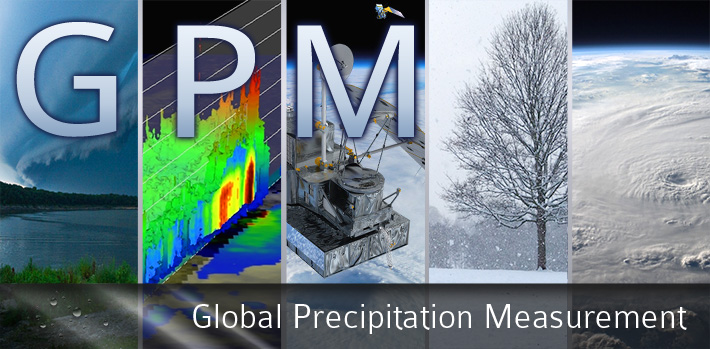|

|
Introduction and RCA Methodology Overview
The Kwajalein Atoll oceanic region in the Republic of the Marshall Islands is one of several unique GV sites for TRMM validation studies (Wolff et al. 2005). The NASA funded and supported KPOL weather radar is a vital tool in this effort. Characteristics of the KPOL radar and task configurations can be found in Schumacher and Houze, 2000 (their Table 1), and Wolff et al. 2005 (their Tables 1 and 2). The virtually complete oceanic coverage in this remote location makes data from the Kwajalein GV site highly desirable, but technical and logistical concerns pushes data quality issues to the forefront.
Concerns regarding KPOL calibration stability have repeatedly compromised attempts at providing accurate reflectivity and rain rate information to the scientific community. The KPOL radar calibration can fluctuate for a variety of reasons: mechanical and engineering issues (e.g. failed parts) in extremely harsh environmental conditions occur frequently, incorrect calculation of system gains and other parameters, faulty operator adjustments, and calibration drift may also occur. Before useful data and validation products can be provided to the community, calibration fluctuations need to be addressed. Through the analysis of ground clutter returns, the TSVO asserts that the health of KPOL can be monitored and adjusted on a near-real-time basis. The Relative Calibration Adjustment (RCA) technique (Silberstein et al. 2008, Marks et al. 2009) employs the use of ground clutter target reflectivity to quantify daily and hourly reflectivity calibration adjustments relative to a known baseline. The mutually accepted calibration baseline was collectively determined by individuals from several groups by comparison of pre-experiment (KWAJEX; Yuter et al. 2005) KPOL and TRMM PR reflectivities. This comparison revealed that KPOL was running 6 dB cold (Houze et al. 2004). By adjusting KPOL reflectivity on this day by +6 dB, the calibration baseline was established.
An interesting thing to note is that the lower quartiles of the PDF of clutter area reflectivity is sensitive to precipitation, and thus the varied shape of the lower end of the distribution over the day; however, the 95th percentile is remarkably stable, hour-by-hour, event-by-event and day-to-day in the absence of some physical change in the engineering of the radar (calibration adjustments, pointing angle changes, faulty equipment, etc.).
To segregate ground clutter from precipitation echo, the 95th percentile of the daily CDFs was selected. This subset captures significant as well as subtle calibration events, while excluding interference from precipitation. For specific technical details on the development of this methodology, see Silberstein et al. (2005). KPOL radar engineering logs provide documented evidence of hardware and software changes, equipment malfunction, and operator adjustments. These log entries can be correlated directly with calibration fluctuations detected through ground clutter.
Benefits of Clutter Map Approach
- 95th percentile clutter-area reflectivity is remarkably stable even in the presence of precipitation
- Little or no diurnal effect
- Easily calculated for near-real-time monitoring of the current state of the relative radar calibration
- Current effort: determine the best means of applying these relative calibration changes to historical data to derive improved GV (TRMM & GPM) products.
How to interpolate the plots (these plots are current)
| Daily PDF | Monthly RCA |

|

|
There are two basic plots. The first, shown in the left hand column above, provides the hourly and daily PDF and CDF of clutter area reflectivity. Each curve is color-coded by hour and the ensemble, or daily curve is the bold red line. The RCA values, which represent the difference of the current calibration from the baseline set on Aug. 1, 1999, are also printed on the left hand side of the graph. The 95th percentile reflectivity is indicated by the intersection of the two dotted black lines and usually is between 45 and 55 dBZ.
The second plot shows a time series of the daily RCA values for a given month. The baseline +6 dB, again set on Aug. 1, 1999, infers that the radar is suspected of runnng cool by 6 dB. Thus, a zero RCA would represent a quote good calibration state. However, there is a caveat in that there are other factors that can affect the RCA value, such as an erroneous elevation pointing angle and probably some engineering issues, all of which are being investigated.
The main benefit of the current RCA technique is its ability to detect changes in the state of the KPOL radar. Calibration of the technique with regard to the actual relation of the RCA to the absolute calibration are being investigated.
Use the pull-down menus below to view the daily PDFs or Monthly RCA plots.
Daily plots
Monthly plots and data
References
Silberstein, D. S., D. B. Wolff, D. A. Marks, D. Atlas and J. L. Pippitt, 2007: Ground Clutter as a Monitor of Radar Stability at Kwajalein, RMI. J. Atmos. Ocean. Tech., 25, 2037-2045.
Marks, D. A., D. B. Wolff, D. S. Silberstein, A. Tokay, J. L. Pippitt, and J. Wang, 2009: Availability of High Quality TRMM Ground Validation Data at Kwajalein, RMIU: A Practical Application of the Relative Calibration Adjustment Technique. J. Atmos. Ocean. Tech. , 26, 413-429.
Schumacher, C., and R. A. Houze, Jr., 2000: Comparison of radar data from TRMM satellite and Kwajalein oceanic validation site.J. Appl. Meteor., 39, 2151-2164.
Wolff, D. B., D. A. Marks, E. Amitai, D. S. Silberstein, B. L. Fisher, A. Tokay, J. Wang, and J. L. Pippitt, 2005: Ground validation for the Tropical Rainfall Measuring Mission. J. Atmos. Ocean. Tech, 22, 365-380.
Yuter, S. E., R. A. Houze, Jr., E. A. Smith, T. T. Wilheit, and E. Zipser, 2005: Physical Characterization of Tropical Oceanic Convection Observed in KWAJEX. J. Appl. Meteor. 44, 385-415.
Send questions or suggestions to David B. Wolff

|
Privacy Policy and Important Notices |

|
Web Curator: Jianxin Wang NASA Official: David B. Wolff |

